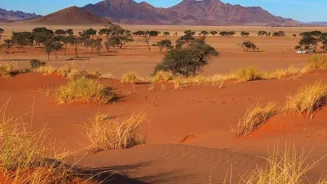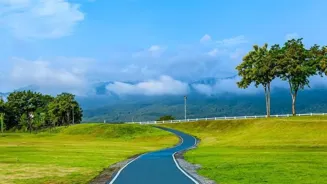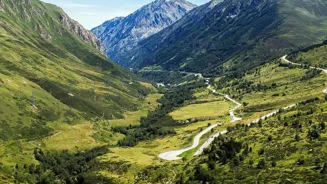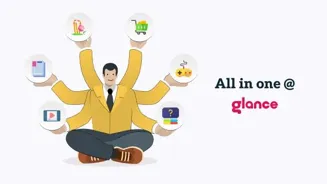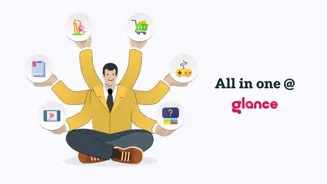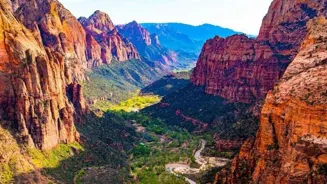Discover how technology is bridging the gap between humans and nature. Explore 7 innovative ways fostering a deeper connection
In a country like India, where the scent of monsoon rain on parched earth and
the vibrant hues of flora hold deep cultural significance, our relationship with nature is intrinsic. However, the relentless march of urbanisation sometimes creates a distance.

Thankfully, technology isn't always the villain. It's also serving as a bridge, reconnecting us with the natural world in surprising and delightful ways. Let's explore seven such avenues where technology is fostering a deeper connection:
Smartphone apps revolutionize nature identification, sparking curiosity and conservation efforts
Gone are the days of flipping through heavy encyclopedias to identify that intriguing bird song or the unfamiliar flower blooming in your garden. Now, a simple smartphone app can do the trick in seconds.
Apps like Seek (by iNaturalist) and PlantNet utilise image recognition technology to identify plants, animals, and even insects simply by pointing your phone's camera at them.
This instant gratification sparks curiosity and encourages us to learn more about the biodiversity around us, transforming casual walks into enriching learning experiences. Imagine strolling through a park and instantly knowing the names of every tree and bird you encounter.
This accessibility transforms nature from a distant 'other' into a familiar friend, fostering a sense of belonging and responsibility toward its conservation. Moreover, many of these apps contribute to citizen science projects, allowing users to contribute valuable data to scientific research.
VR opens nature's wonders to all, fosters education and empathy
For those confined to urban spaces or facing mobility challenges, virtual reality (VR) offers a remarkable window into the natural world. VR headsets can transport you to the Amazon rainforest, the depths of the ocean, or the summit of Mount Everest without ever leaving your living room.
These immersive experiences go beyond mere entertainment; they evoke a sense of awe and wonder, reminding us of the planet's breathtaking beauty and fragility. Educational institutions are also leveraging VR to teach ecology and conservation in engaging ways.
Students can virtually dissect a flower, explore a coral reef, or witness the effects of deforestation firsthand, fostering a deeper understanding and appreciation for environmental issues.
VR documentaries are also gaining traction, showcasing the lives of endangered species and the challenges they face, promoting empathy and inspiring action.
Wildlife cameras offer real-time insights into animal lives, promoting connection and conservation
Wildlife cameras, strategically placed in remote locations, are offering unprecedented glimpses into the lives of animals in their natural habitats.
Streaming platforms like YouTube and dedicated websites host live feeds from these cameras, allowing us to observe everything from nesting eagles to migrating whales. This real-time access fosters a sense of connection and allows us to appreciate the complexities of animal behaviour and ecosystems.
It’s not just about entertainment; it’s about education and fostering empathy. Witnessing a mother bear caring for her cubs, or a pod of dolphins playfully interacting, evokes a sense of wonder and reinforces the importance of conservation efforts.
These cameras also provide valuable data for researchers studying animal behaviour and population dynamics.
Weather and Environmental Monitoring Apps
Keeping a Keen Eye on Our Planet
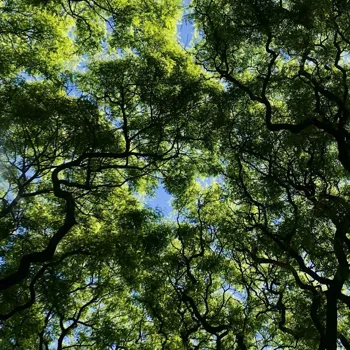
Weather apps empower environmental awareness and informed decisions, aiding conservation efforts
Staying informed about weather patterns and environmental conditions is crucial for both personal well-being and environmental awareness. A plethora of apps provide real-time data on air quality, temperature, rainfall, and even UV levels.
This information empowers us to make informed decisions, such as choosing the best time to go for a walk, protecting ourselves from pollution, or conserving water.
Moreover, some apps allow us to track environmental changes over time, fostering a deeper understanding of the impacts of climate change and encouraging us to adopt more sustainable practices.
By providing access to this data, technology helps us become more responsible and engaged citizens, actively participating in environmental monitoring and conservation efforts.
Online platforms unite nature enthusiasts for conservation through citizen science projects
The internet has fostered the growth of online communities dedicated to nature observation and conservation. Platforms like iNaturalist and eBird bring together amateur naturalists, scientists, and conservationists, creating a powerful force for environmental stewardship.
These communities allow users to share their observations, identify species, and contribute to scientific research. Citizen science projects, facilitated by online platforms, empower individuals to collect valuable data on biodiversity, pollution levels, and other environmental indicators.
This collaborative approach democratises scientific research and fosters a sense of collective responsibility for the planet. By participating in these online communities, individuals can connect with like-minded people, learn from experts, and contribute to meaningful conservation efforts.
Drones aid conservation with cameras, sensors for wildlife monitoring, poaching detection, ecosystem health
Drones are rapidly becoming indispensable tools for conservation efforts. Equipped with cameras and sensors, they can be used to monitor wildlife populations, detect poaching activities, and assess the health of ecosystems.
Drones can cover vast areas quickly and efficiently, providing valuable data that would be difficult or impossible to obtain through traditional methods.
For example, drones can be used to track elephant herds, monitor deforestation in rainforests, or detect illegal fishing activities in marine reserves.
The data collected by drones can be used to inform conservation strategies, guide resource management decisions, and enforce environmental regulations.
By providing real-time information and aerial perspectives, drones are empowering conservationists to protect endangered species and preserve critical habitats.
Gamification, the use of game-like elements in non-game contexts, is proving to be an effective way to engage people in environmental action. Apps and online platforms are using gamification techniques to encourage users to adopt sustainable practices, such as reducing their carbon footprint, conserving water, or recycling waste. These platforms often incorporate elements such as points, badges, leaderboards, and challenges to motivate users and make environmental action more fun and rewarding. For example, an app might reward users for biking to work instead of driving, or for reducing their energy consumption. Gamification can also be used to educate people about environmental issues in an engaging way. By making environmental action fun and rewarding, gamification can help to create a culture of sustainability and inspire individuals to make a positive impact on the planet.
Technology, when used thoughtfully, can strengthen our bond with nature. It is about utilizing these tools to cultivate a deeper understanding, appreciation, and responsibility towards the environment.
It's about moving from passive observers to active participants in protecting the natural world around us and fostering a more sustainable future for generations to come.
AI Generated Content. Glance/InMobi shall have no liability for the content

